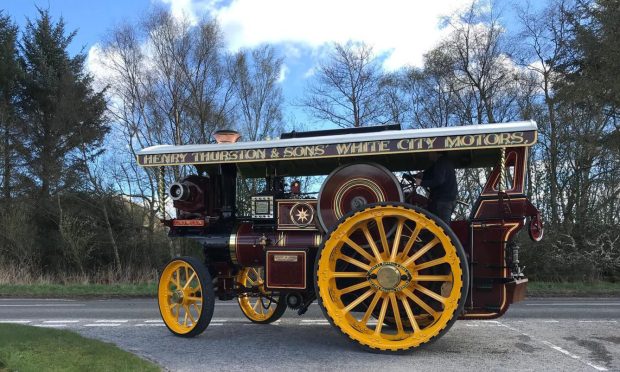He was the Arbroath seaman who played a part in a pivotal British victory which was one of the opening battles of the Anglo-Spanish War.
Two years later he died aged just 20 in the Caribbean from yellow fever and was buried at sea, as was the custom of the Royal Navy.
David Clark wrote home to his father James Clark, who was a watchmaker in Arbroath, describing the battle between the British fleet and the Spanish fleet.
Mr Clark, who was born in Arbroath in 1779, saw action during the Battle of Cape St Vincent on board HMS Goliath under the command of Captain Sir Charles Henry Knowles.
During the engagement Admiral Jervis ordered Goliath to tack in succession with the other ships whilst in close action with the enemy.
Goliath came under heavy fire and was forced to temporarily drop out of the action while her crew knotted and spliced the rigging.
On his return to the battle, Knowles observed an opportunity to pass to windward of the Santísima Trinidad and so becalm her, but was ordered to stay in formation.
During the action Goliath suffered only eight wounded with none of her crew killed.
Mr Clark’s letter informed his father of a violent storm that took place in the Gulf of Gibraltar causing the loss of the Courageous and the Bombay Castle and damage sustained by the Gibraltar, Goliath, Prince George and St. George.
The HMS Goliath also passed a convoy of transports from Elba under the command of Commander Horatio Nelson and took the events of a battle between the British fleet and the Spanish fleet in which his ship was involved.
Mr Clark served in the Royal Navy as a midshipman on board the HMS Edgar in May 1795, later being promoted to master’s mate, serving on several ships, including the Sandwich (May 1795), Edgar (May-December 1795), the Swallow (January 1796), Goliath (March 1796-February 1797), the Barfleur (October 1797-February 1798), and the Alarm (1798-1799).
The letter is part of a display of archival documents and museum objects with a naval connection which are being shown at Angus Archives in Forfar.
There are also objects on display from the museum service including an 18th century pistol, a large Royal Doulton commemorative jug of Lord Nelson after his victory at Trafalgar, cannon balls, and some ship-related items.
The display is being held to coincide with the 220th anniversary of the Battle of Cape St Vincent and runs until Friday between 10am and 4pm.
Tales of Sails features archival documents and museum objects with a naval connection from across Angus, and recreates the Battle of Cape St Vincent using naval miniatures loaned by the Angus Wargames Club.










